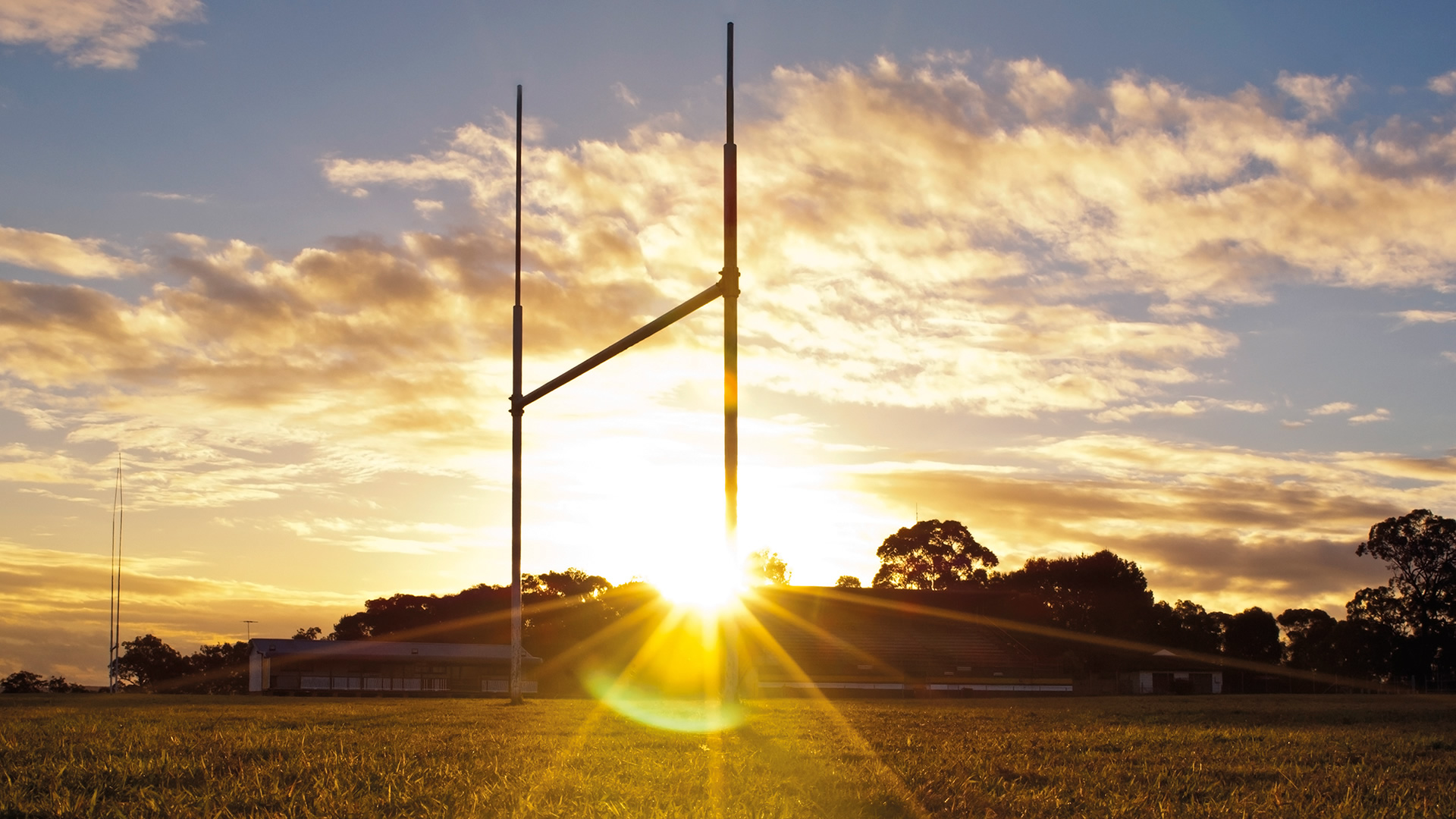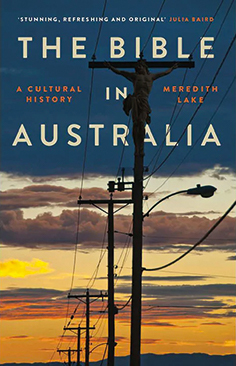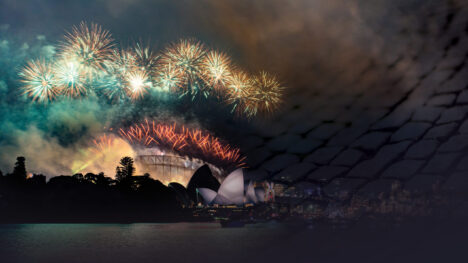
Australia is a secular society. Or so we are told.
Australians are not religious. Or so we are told.
Australians are more interested in sport than God. Or so we are told.
So what do we make of the fact that on the average weekend, there are more Australians in church than there are at all the football matches of the various codes combined?
There’s at least one thing that’s true: Australians don’t seem comfortable talking about religion in public. But that doesn’t mean that Australians aren’t interested in religion. Or God, for that matter. In fact, levels of personal interest in religion and belief in God are pretty close to levels measured in the USA, that most overtly Christian Western nation.

And that’s the introduction for a most fascinating book: The Bible in Australia: a cultural history, by Meredith Lake (NewSouth Publishing, 2018). And no, it’s not a surreptitious attempt to foist religion on the public; this book simply traces the long, interwoven story of Australia and the Bible—and it crops up in unexpected places and with surprising influence for a bunch of transported criminals who purportedly kicked over the traces of British authority, which was politics, law and religion combined.
Lake notes the Bible and its influence popping up in unusual places, beginning her account with the tattoo on the leader of the Bra Boys, the notorious Maroubra-based surfing gang. The tattoo reads “My Brother’s Keeper”, a phrase taken from the story of Cain and Abel in Genesis, the first book of the Bible. Not that the Bra Boys make any claim to being Christians, but that is precisely Lake’s point. The words—and ideas—of the Bible have so permeated our culture that many people use them while remaining unaware of their origin, demonstrating the reach of this influential text.
Over a series of fascinating chapters, Lake reveals how the Bible is interwoven with many of Australia’s best-known stories and most cherished concepts. Bibles accompanied Captain James Cook’s voyages of discovery and came with the First Fleet in 1788. Evangelical preachers saw the Bible as the means by which a convict society could be raised to righteousness, while convicts resonated with its narratives of exiles in slavery. Even Governor Arthur Phillip, who was more an Enlightenment man than a Christian, promoted the Bible and Christianity as bulwarks of decency, stability and civilisation.
Aboriginal groups ironically used its stories and ethics to fight back against European dispossession and injustice, appropriating it through translation (which has helped preserve some Aboriginal languages) and as an ideological basis for the recognition of Aboriginal land rights. Some devout white settlers and missionaries based their passionate defence of Aboriginal rights on the principles of their biblical beliefs of the unity of humanity, and were distressed by the avarice of their fellow Europeans who abused and slaughtered Indigenous Australians in their grab for land.
At the same time, many British immigrants saw themselves in the words of Old Testament prophets, settling a new promised land, and fulfilling the biblical mandate to fill the earth and make it prosperous. This interpretation of the Bible often overrode its injunctions of justice and compassion towards all people, and helped justify Aboriginal dispossession.

Biblically-driven ideas were behind the establishment of some iconic Australian institutions, such as the Bank of NSW (now Westpac) and AMP. In both cases, the founders’ Christian ideals motivated them to help the poor through improved access to capital. Many colonial newspapers, including Fairfax’s Sydney Morning Herald, were founded to champion social reform and provide a biblically-informed critique of government. Given the apparent greed and self-interest of today’s corporate world, as abundantly illustrated through the stories that have emerged during the recent Financial Services Royal Commission, we could perhaps do well to revive some of the high-mindedness of some of our founding entrepreneurs.
Other Australian landmarks, including our early adoption of state-wide education, the trade union movement and its political wing, the Labor Party—not to mention the current Liberal Party and its predecessors—women’s suffrage and a legislated minimum wage ensuring “frugal comfort” for working families, were all underpinned by appeals to biblical ideas.
It will be surprising for many that the Bible was a driver of ideas for Federation, and a shaper of the Constitution. Some Christians wanted to entrench religion in the institutions of the new Commonwealth; others, drawing from the same Bible, argued for the separation of church and state. While the latter view largely prevailed, the Bible still held a prominent place in the rituals of Parliament for many years.
Lake notes the role of the Bible in the Australian experience of both World Wars, conclusions that mirror my own research into Australian Great War spirituality. Despite the myth of Anzac secularity, at least one in five of the Anzacs were active Christians, and a number of Anzac diarists noted that Bible-reading was a common activity in the trenches. Many men who fought were motivated by Christian ideals of protecting the weak (Belgium, for example) against powerful oppressors (Germany), and there were those who hoped the war would prompt the national conscience to more righteous living. At the same time, Australian pacifists were also driven by their understanding of the Bible, using its principles to argue for peace between the nations. The many war memorials, from tombstone inscriptions to local monuments, the RSL’s “Lest We Forget” to the rituals of Anzac Day, frequently ring with biblical phrasings and imagery.
The Bible continues its influence, even in a more overtly secular and pluralistic modern Australia, where the art of painter Arthur Boyd, writers like Joseph Furphy (author of the classic novel Such is Life), Henry Lawson and Tim Winton, and the lyrics of singers Nick Cave and Paul Kelly draw heavily on biblical imagery, while feminist Germaine Greer drew considerable ideological energy from attacking the Bible’s apparent support for patriarchy.
Lake’s conclusion: the Bible remains densely woven into the fabric of Australian culture and history. Anybody who wishes to truly understand Australia and Australians overlooks its profound influence at their peril. It’s funny that we are prepared to discuss other key cultural influences, but feel shy about the role of the Bible.
Religion in the public sphere is a hot topic at the moment, what with religiously linked international terrorism and a push-back by those who feel that the good old values of Western society are at risk from immigration and multiculturalism. Actually, right now is a good time to bring religion and its influence into the public discussion, not as a weapon to beat those who differ from us over the head, but in genuine discussion, listening at least as much as we speak, seeking to understand rather than to win an argument. And an informed discussion, especially one informed about where we have come from (our history), is always better than one based on assumptions. What do we know about Australia’s religious influences? How have they shaped the way we think and behave?
Lake’s very readable book is a terrific place to start.
The Bible in Australia: a cultural history, by Meredith Lake, was SparkLit’s 2018 Australian Christian Book of the Year. More information is available via NewSouth Publishing <newsouthbooks.com.au>.
Daniel Reynaud is an Australian military historian and associate professor of humanities and creative arts at Avondale College of Higher Education in NSW’s Lake Macquarie region.









